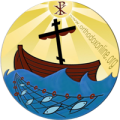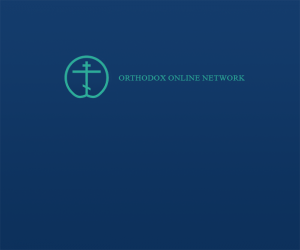From the first day of the Great Week, we must (receive) Jesus Christ, and accept that His will dominates us. In this reception of Christ coming to us lies the meaning of Palm Sunday (25).
At vespers, held on Saturday evening, three recitations from the Old Testament are read. The first talks about the final instructions that Jacob gave to his sons (Genesis 49:1-2, 8-12). This passage was chosen because it refers to the “rod,” “the colt,” and “the blood of the grapes” that washes the clothes, all of which acquire a new meaning with Jesus’ entry into Jerusalem before his Passion: “The scepter will not depart from Judah... When will someone come who will have the subjection of the people, binding With the vine his colt, and with the vine the foal of his ass. He washed his robe with wine, and with the blood of the grapes his robe. As for the second reading (Zephaniah 3:14-19), it also announces the presence of the Comforting King: (Shout, O Israel... The King of Israel, the Lord is in your midst. See no more evil). The third reading refers to the prophecy of Zechariah (9:9-15) that was fulfilled on Palm Sunday: (Rejoice greatly, O daughter of Zion... Behold, your king is coming to you. He is just and victorious, gentle, and he rides on an ass and on a colt, the foal of a female donkey.) (26).
The magic hymns call us to go to meet the coming King: (Come, with the branches, we will praise Christ the Lord... God the Lord has appeared to us, so celebrate the feast, and come, let us glorify Christ with joy, and with palm branches and branches shout praises towards him, saying: Blessed is he who comes in the name of the Lord). The Gospel of Magic (Matthew 21:1-11, 15-17) describes Jesus’ solemn entry into Jerusalem. (27). At the end of the magic service, the bishop or priest blesses the palm branches and distributes them to the believers.
The message that is recited in Chrysostom’s Mass that is held today (Philippians 4:4-9) speaks of the imminent coming of the Lord: (Rejoice in the Lord at all times. Again I say, rejoice... The Lord is near). As for the Gospel (John 12:1-18), it refers to the anointing of Jesus’ feet with the ointment that Mary arose in Bethany (and the Church will remind us of this event on the morning of Holy Wednesday) and then to the entry into Jerusalem. The closing blessing begins at the end of the Mass with the following words: (O you who were willing to sit on a colt, the foal of a donkey, for our salvation...).
Let us now seek to understand some of the teachings of this Sunday.
* (Behold, your king comes to you.) Today, Jesus comes to us as our king. He is more than a teacher who guides his disciples. Jesus wants us to accept His will in everything and give up all our own desires. He comes to us to reign over our souls and to establish a king in our hearts.
* (To you...). Jesus comes not only to all of humanity, but to each one of us in a special way. (is your…). Jesus wants to be mine. In a special sense, He belongs to each one of us. In a completely personal and distinct way, he demands inner and inner obedience and acceptance.
* This king is (humble). He comes to us riding on a vile animal, a symbol of humility and medicine. One day he will return in his glory to judge the world. Today, he rejects all manifestations of glory or authority and does not demand any visible kingdom. He only wants to rule over our hearts: “My son, give me your heart” (Proverbs 23:26).
* But the people’s feeling was correct when they greeted Jesus as the visible king of Israel, because Jesus is not only the king of individuals, but also the king of human groups. His kingdom is also of a social nature, and extends to the fields of politics and economics in addition to the moral and spiritual field. There is nothing strange or far-fetched about the lordship of Jesus.
* The crowd that received Jesus was carrying palm fronds and branches that may have been olive branches - a tree that we find in abundance on the outskirts of Jerusalem. Both palm and olive branches have their symbolic meaning. Palm fronds indicate victory, while olive branches indicate peace and anointing. So let us go to meet Jesus, glorifying his strength and kindness at the same time, offering him our victories (which are actually his victories) over ourselves and over sin, as well as our inner peace (which is his peace).
* (And the great crowd spread their clothes on the road...). Let us throw at the feet of Jesus our clothes, our possessions, our trust, and our assets, as well as our false appearances, and above all our thoughts, desires, and feelings, and let the victorious King trample all that we have, and let us submit to Him all that is precious and valuable that we have, presenting it to the Master.
* The people were chanting: “Hosanna (28) Blessed is he who comes in the name of the Lord. If I can utter this phrase with all sincerity and obedience, and if it truly expresses a total longing for the King whom I accept with all my heart, then I will have, at that very moment, turned away from my sins and accepted Jesus as my guest. Welcome to whoever comes to me! And may he be blessed!
(25) Both the Greeks and Latins give this name to the Sunday before Easter. We know that, starting in 397, it was practiced in all Mesopotamian churches to bless palm trees on Sunday. As for Jerusalem, during the same period, Palm Sunday was celebrated as follows: The believers gather at dawn in the Church of the Resurrection, and from there they move to the Church of Calvary, where the regular Sunday service is held. Then they would make a big procession in the early afternoon to the Mount of Olives where they would hold another service. Then, around three o'clock, they move to the place from which Christ ascended, according to tradition, and hold another service. From there, at about five o'clock in the afternoon, they would go to Jerusalem, carrying palm branches and olive branches, and they would perform vespers in the Church of the Holy Sepulcher, then they would go to the Church of Calvary and end the day with final prayers.
(26) The Prophet wants to contrast the traditional image of kings riding on horses or chariots with the image of a king whose entry into his capital is a sign of humility. The donkey is the opposite of the horse, which suggests the idea of war and conquests.
(27) Matthew's account transmits, with some modifications, Mark's account (11:1-11). Matthew considers that Jesus set out from Bethphage on his way to Jerusalem, while Mark mentions Bethphage and Bethany at the same time. It means house of faji (house of green figs). Is there a connection between this name and the curse of the fruitless fig tree, at the beginning of the last week of Jesus’ teaching?
(28) During the time of Jesus, the Hebrew word Hosanna had lost its original power and meaning, and had become merely a cheer and a cry of joy or reconciliation. It was used in this sense on the seventh day of the Feast of Tabernacles called (Hosanna Day) or (The Great Hosanna). But the original meaning of the word was much stronger than that, as it was used in the sense of: (Save now, pray), and therefore it had Messianic concepts. The Holy Spirit put this word on the lips of the crowd, upon Jesus’ entry into Jerusalem, in its deep, ancient meaning, without the crowd being fully aware of this meaning.

